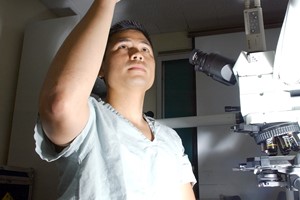Dermatological conditions are one of the most common types of disorders worldwide. For the past decades, the majority of the dermatology market has remained saturated with established products, according to GBI research.
However, the clinical and commercial success of biologics in treatments offered, as well as advancements in the understanding of the disease pathways of many dermatological conditions, have led to a renewed interest from pharmaceutical companies in the dermatology market, and subsequently the emergence of an innovative pipeline.
The worldwide dermatology market was esteemed at $20.0 billion in 2015, mirroring a five-year CAGR of 2.6%. BRIC (Brazil, Russia, India, China), the quickest developing district of the worldwide dermatology ought to aggregate more than $4.6 billion by 2020. Organizations are again entering the dermatology part by broadening the signs of existing items into dermatology.
Skin conditions are among the most widely recognized medical issues among most national populaces, altogether surpassing the predominance of conditions, for example, weight, hypertension and growth.
The significant expenses of skin sicknesses incorporate doctor visits, healing facility mind, physician endorsed drugs and over-the-counter items for treating or dealing with these conditions.
Inventive treatments for some skin infections have empowered restored enthusiasm for this market among real pharma organizations. New players have developed as serial acquisitions took little to medium-estimate organizations into bigger ones.
Grand View Research confirms the global dermatology devices market size was valued at USD 8.00 billion in 2015 and is expected to showcase lucrative growth over the forecast period. Esthetics has become a major concern and this has led to an increasing number of esthetic procedures, which aid in the treatment of poor skin conditions. Treatment of various skin disorders results into complete skin rejuvenation as well as reduces the risk of skin cancer.


Hair-related problems are also accelerating the demand for dermatology devices globally. There is a high prevalence of skin cancer across the globe. According to The Skin Cancer Foundation, around 10,130 people died due to melanoma in 2016.
In order to reduce such high mortality rates, there is a growing need for rapid diagnosis of skin disorders, particularly, skin cancer. Hence, different diagnostic equipment are being used to treat various kinds of skin cancer.
For instance, dermatoscopes are highly essential for detecting melanoma by evaluating pigmented lesions. Growing technological advancements pertaining to dermatology devices has supported the growth of the market. Laser instruments and light therapy equipment has proved to be technologically advanced in improving the esthetic appeal of people.
Power-assisted and vibration-assisted liposuction devices are some of the technologically advanced devices, which help in reducing a substantial amount of fat in lesser time. Liposuction devices are expected to gain attractive growth over the forecast period due to growing concern about body contouring and fat removal amongst people with obesity.
In addition, in order to initiate weight management techniques, liposuction treatments are highly useful. Asia Pacific is projected to display lucrative growth rate over the forecast period.
This is due to the fact that medical tourism associated with low-cost treatments is providing a huge advantage to this region. Some of the key players comprise Alma Lasers, Ltd., Cynosure, Inc., Valeant Pharmaceuticals International Inc., Cutera, Inc., Avita Medical Ltd., Syneron Medical Ltd., Solta Medical, Inc., and GE Healthcare. The key companies are concentrating on strategic initiatives such as mergers and acquisitions, new product development, and geographical expansions.










